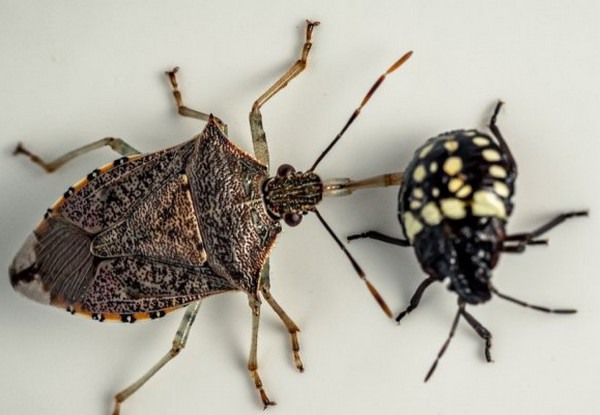The southern green stink bug, Nezara viridula, has been active in Dutch greenhouses for several years now. The insect causes damage to several protected crops, particularly sweet peppers, but also other vegetables and flowers. The Business Unit Greenhouse Horticulture and Flower Bulbs of Wageningen University & Research (WUR) is investigating what are the best methods of controlling the new pest biologically. A promising candidate turns out to be an 'old' acquaintance: the predatory stink bug Podisus maculiventris.

The southern green stink bug is 11.5 to 16.5 millimeters in size and has been a pest in southern Europe for a long time, but it occurs worldwide. In recent years, the insect migrated northwards and eventually ended up in Dutch greenhouses. Damage has been reported in the cultivation of sweet peppers, cucumbers, gerbera, and aubergines. Pepper growers are particularly affected by the southern green stink bug: the southern green stink bug punctures fruits and young plant parts, causing growth reduction, loss of quality, and spots on the fruits. In autumn, the stink bug goes into diapause, hiding in and around the greenhouse. As soon as a new cropping cycle is started, the diapause is broken, and the bug reappears.
Research bug control
Three years ago, WUR started to research possibilities to control the bug. During the research, the effects of pheromone traps, entomopathogenic fungi, overwintering traps, and natural enemies were tested. In addition to the commercially available egg-parasitic wasp Trissolcus bassalis, the predatory stink bug Podisus muculiventris was also tested. This bug can be a good addition to the parasitic wasps because complete control with parasitic wasps proved difficult to achieve.
Podisus vs. Nezara
Various cage trials have shown that Podisus can establish itself very well in peppers as an alternative food source in the absence of pests. Also, Podisus is able to control Nezara and prevent an outbreak. Podisus particularly preys on the nymphs of Nezara. An additional advantage of Podisus is that it is known as a biocontrol agent of caterpillars. Despite its exotic origin, Podisus has a permit to be used in The Netherlands.
 For more information:
For more information:
Wageningen University & Research
www.wur.nl
